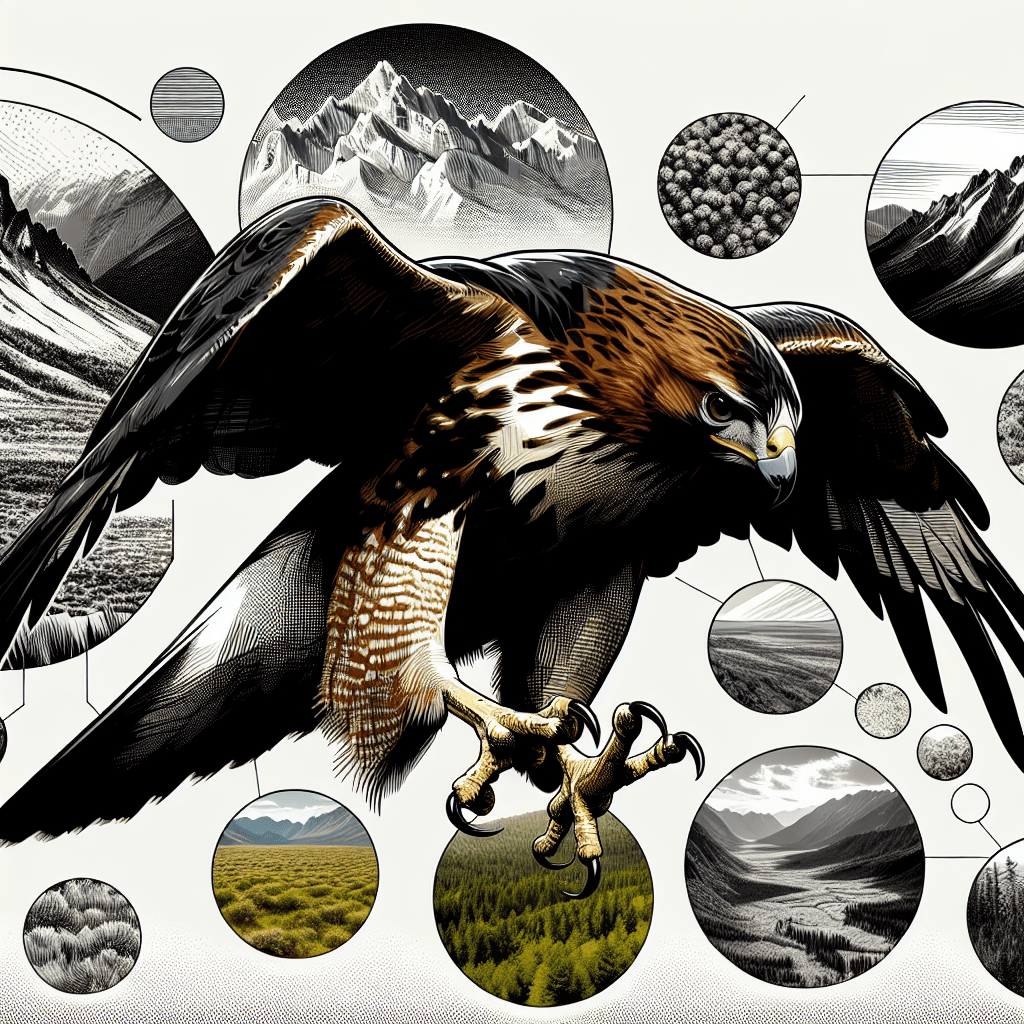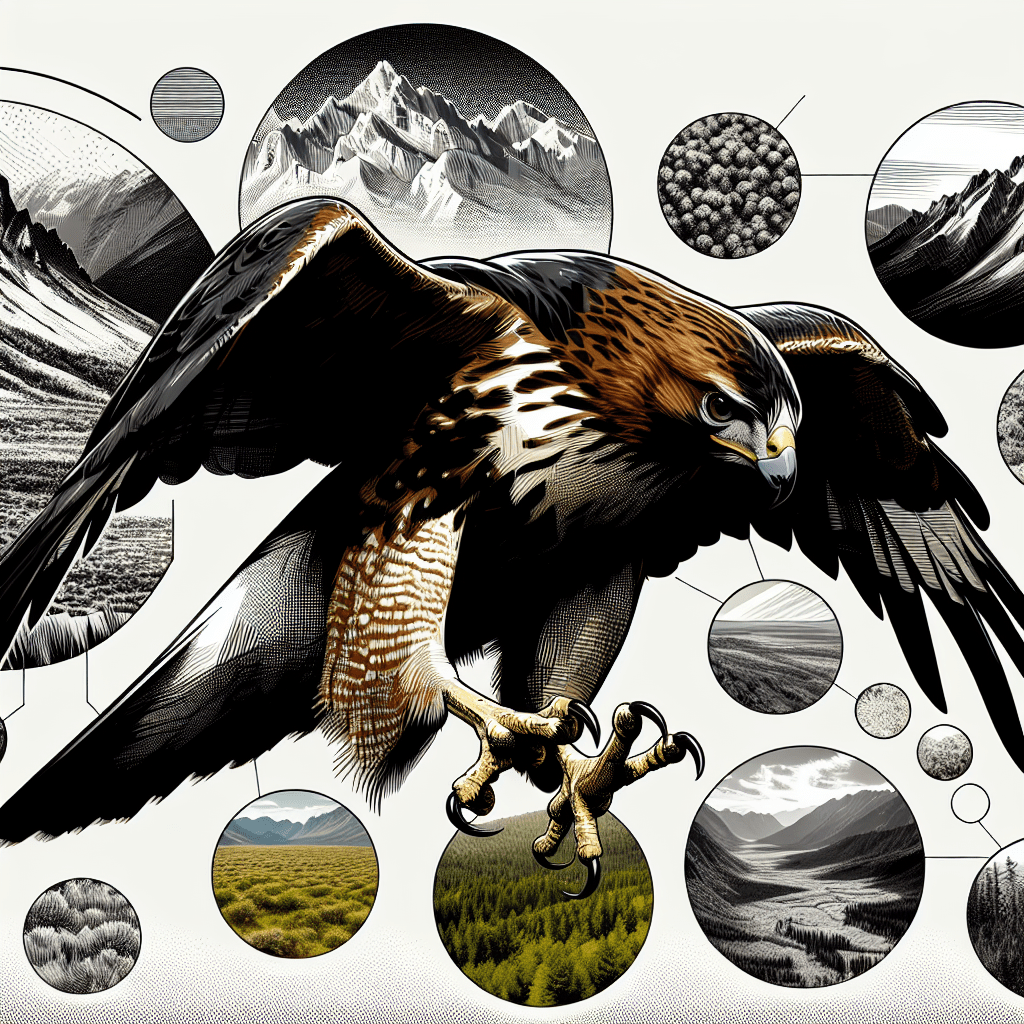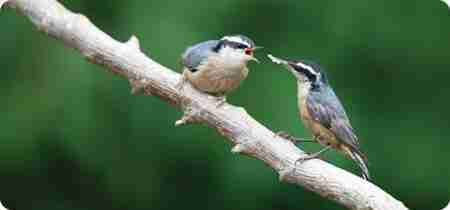Imagine being up in a wide, unobstructed sky with a bird’s eye view of the world below. In “Understanding the Hunting Adaptations of Hawks in Various Conditions,” you’ll be taken on a fascinating journey into the world of hawks. This article offers an insightful look into the clever adaptations that enable these amazing birds to hunt efficiently in a diverse range of environments.
You’ll uncover the mystery of how hawks contest with desert heat, icy storms, and dense woods all in the quest for their next meal. Hold tight, because you are in for a wild, feathery ride!
Physical Adaptations of Hawks
When you’re observing the majestic hawks soaring in the sky, it’s easy to overlook the impressive physical attributes that make them such skilled hunters.
Sharp & Curved Beak Adaptation
You’ll notice that hawks have a sharp, curved beak. This isn’t a mere cosmetic feature; it’s a crucial adaptation for hunting and feeding. The sharp, hooked tip is perfect for tearing apart prey, while the curve facilitates pulling and ripping flesh away from bones.
Powerful Talons
The talons of a hawk are another adaptation that contributes remarkably to its hunting prowess. These strong, sharp claws are designed to hold and kill prey effectively. A hawk can use its talons to puncture, grip, and carry prey, even while in flight.
Raptor Eyesight & Vision
Another reason hawks are such formidable hunters is their remarkable eyesight. Raptor vision is significantly more acute than that of humans. Hawks can spot a potential meal from a great distance and swoop in at just the right moment, thanks to their keen vision.
Aerodynamic Body Structure
Lastly, the body structure of a hawk is ideally suited for flying quickly and maneuvering skillfully in the air. Its sleek, aerodynamic shape minimizes air resistance, allowing for fast, efficient flight.
Behavioral Adaptations of Hawks
In addition to their physical adaptations, hawks have several behavioral adaptations to aid in their hunting efforts.
Predator Scanning & Vigilance
Hawks maintain a state of constant vigilance, scanning their surroundings for potential prey with calculated precision. This level of alertness is crucial in spotting and securing their next meal.
Skillful Flying & Soaring
Their ability to fly skillfully, combined with their exceptional ability to soar, makes hawks a formidable presence in the sky. They use the uplift from thermal currents to conserve energy while soaring in search for prey.
Swoop & Grasp Technique
When they spot potential prey, hawks use a swoop and grasp technique to catch it. With incredible speed and precision, they can swoop down on unsuspecting prey and grasp it tightly with their powerful talons.
Camouflaging & Stealth
Hawks also employ a level of stealth while hunting. Their brown and grey plumage often blends in seamlessly with their surroundings, masking their presence from their prey until it’s too late.
Habitat and Its Impact on Hunting
The hunting techniques and physical adaptations of hawks are significantly influenced by their habitat.
Adaptations to Woodlands
In the woodlands, hawks have learned to navigate through dense trees and undergrowth in search of prey. They use their sharp vision and stealthy flight skills to catch squirrels, rabbits, and birds typically found in these habitats.
Adaptations to Grasslands
In grassland habitats, hawks often fly higher to spot their prey since the open expanses provide fewer places for their quarry to hide. They have adapted to be patient observers in these environments before making their swift and deadly strike.
Adaptations to Desert Environments
In desert environments, hawks have adapted to tolerate high temperatures and to hunt animals that are abundant in these regions, such as lizards and snakes. Their keen vision is especially vital in these open, barren landscapes.
Adaptations to Mountainous Terrains
In mountainous terrains, hawks make use of the strong wind currents for soaring and gliding effortlessly. Their perfect aerial acrobatics skills are vital in these rough terrains where the wind can be unpredictable.

Seasonal Adaptations of Hawks
Hawks have also adapted their hunting strategies based on the seasons.
Winter Hunting Strategies
During the harsh winter months, hawks switch their feeding habits to scavenge on carrion or catch smaller, more abundant prey. Their impressive heat-conservation and energy-management mechanisms help them survive the cold.
Summer Hunting Adaptations
In summer, hawks take full advantage of longer daylight hours and an abundance of prey. They might also hunt early in the morning or late in the afternoon to avoid the hottest parts of the day.
Fall Migration and Hunting
Fall is the time hawks migrate, often covering large distances. During this period, their hunting becomes more opportunistic, taking advantage of the migrating bird populations or easily available local prey.
Spring Nesting and Feeding
Spring is a crucial time for hawks. As they nest and raise their young, their hunting increases to feed the growing offspring. Their powerful talons and sharp vision play an essential role in protecting the nest from predators.





Effects of Weather Conditions on Hawk’s Hunting
Weather conditions can greatly impact a hawk’s hunting efficiency.
Hunting in Rainy Conditions
Rainy conditions can make hunting challenging. But hawks are not deterred. Their oil-secreting glands help waterproof their feathers, allowing them to fly and hunt despite the downpour.
Hunting in Storms and High Winds
Storms and high winds can disrupt hawks’ hunting. However, they have been observed using the windy conditions to their advantage by soaring higher and allowing the wind to carry them swiftly to their prey.
Hunting in Sunny Conditions
Sunny conditions provide perfect hunting opportunities for hawks. The clear weather enhances their vision and allows them to spot prey easily.
Hunting in Foggy Situations
Foggy situations can hamper hawks’ vision. However, they’ve adapted to these conditions by relying more on their acute hearing to locate and capture prey.
Hawks Hunting During Day and Night
Hawks are diurnal birds, meaning they are active during the day. However, their hunting patterns change slightly during different times of the day.
Daytime Hunting Techniques
During the day, hawks take advantage of thermals to soar high and survey large areas for prey. They use their keen eyesight to spot potential meals and swoop down to catch them.
Nighttime Hunting Adaptations
Even though hawks primarily hunt during the day, they may hunt at night when food is scarce. They adapt for such situations by flying lower and using their sharp hearing to locate prey.
Twilight Hunting: Dawn & Dusk
The calm air and the soft light conditions during dawn and dusk make it an excellent time for hawks to hunt. This is often when many prey species are most active, creating ample opportunities for the hawk to strike.
Hunting Strategy Based on Prey Type
Hawks display different hunting strategies based on the type of prey they are aiming for.
Hunting Small Mammals
When hunting small mammals, hawks use their strength and speed to swoop down quickly, capturing their prey with their sharp talons.
Hunting Birds
In the case of birds, hawks employ aerial pursuits, outmanoeuvring their target in the air with their agile flying skills.
Hunting Reptiles
For hunting reptiles, hawks usually descend on their prey from a height, grabbing it before it has a chance to defend or escape.
Hunting Insects
When it comes to insects, hawks generally pick them off the ground or snatch them out of the air.

Impact of Human Activity on Hawk’s Hunting
Human activities have a significant effect on how hawks hunt.
Hunting in Urban Areas
In urban areas, some hawks have adapted to live and hunt amidst human activity. They utilise city parks and buildings as their hunting grounds, feeding on pigeons, squirrels, or rats.
Changes in Hunting Due to Habitat Destruction
Habitat destruction often pushes hawks to adjust their hunting behavior. Deforestation may force hawks to widen their hunting grounds, causing increased competition with other raptors.
Hunting Around Agricultural Areas
In agricultural areas, hawks take advantage of crop fields as hunting sites, preying on rodents and other small animals.
Impact of Pollution on Hawks’ Hunting
Pollution can impact hawks’ hunting abilities, particularly if it affects their prey. For example, water pollution can impact fish populations, affecting hawks that depend on these for food.
Conservation Status & Threats to Hawks
The conservation status of hawks fluctuates based on several factors.
Current Conservation Status
Most hawks are not currently considered endangered. However, some species have seen significant decline due to habitat loss, hunting, and pesticide exposure.
Major Threats Affecting Hawks
The primary threats faced by hawks are habitat destruction, illegal hunting, and exposure to harmful pesticides that can impact their reproductive health and longevity.
Conservation Efforts in Protecting Hawks
Conservation efforts are ongoing to protect hawks. These include habitat preservation, the enforcement of stringent laws against hunting, and the reduction of pesticide usage.
Role of Hawks in Ecosystem
Hawks play an essential role in the ecosystem. By preying on various animals, they help control populations and maintain a balance in the food chain.
Future Predictions and Adaptations
The future for hawks depends on various factors including climate change and ongoing human activities.
Climate Change and Hawks Hunting
Climate change poses a significant threat to hawks. Alterations in weather patterns can affect the availability of prey, forcing hawks to modify their hunting strategies.
Predicted Adaptations for Survival
To cope with future changes, hawks may adapt by altering their hunting techniques, migrating to new areas, or adjusting their diets.
Future of Hawks in Urban Ecosystems
As urbanization continues, more hawks may start to adapt to urban living. We may witness changes in their hunting behaviors as they adjust to life in the cities.
Role of Research in Understanding Hawks’ Adaptations
Research plays a crucial role in understanding how hawks are adapting to changing environments and conditions. It helps in predicting their future survival strategies and aids in designing effective conservation measures.
In conclusion, Great versatility and adaptability are the key traits that separate hawks from many other bird species. The wide range of their hunting adaptations enables them to endure and thrive in various conditions and areas. While some of these changes are triggered by natural habitat and weather variations, others are forced by increasing human encroachment and activity. Maintaining a healthy hawk population is crucial for the balance of our ecosystems, and understanding these impressive birds’ adaptations can aid in their conservation.



